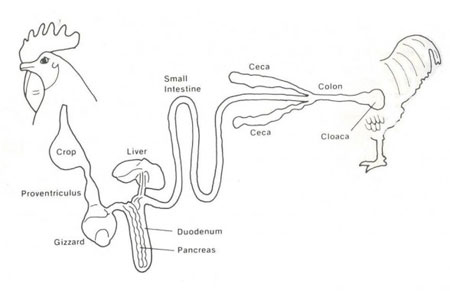Function and nutritional roles of the avian caeca: a review

Gut health is seen as very important in poultry production. Usually the positive effects of nutrition or treatments are not described in the lower digestive tract where the caeca are.
Therefore it is understandable that the role of the avian caeca in the important functions in the maintenance of gut health, fermentation of undigested nutrients, re-cycling of nitrogen from urine, and modulation of the gut microflora, is not well described and therefore understood.
In this review the function of the avian caeca from an anatomical, physiological, microbiological and nutritional point of view is described in the context of modern poultry production. In studies in wild avian species, it has been shown that the caeca are highly adaptive, and will change in size according to the nature of the diet.
The time needed for caecal adaptations to take place, however, is uncertain. Due to anatomical and physiological adaptations, only small and/or soluble particles will be refluxed into the caeca together with urine and digestive fluids. There salts and water are reabsorbed and uric acid and carbohydrates will be fermented by the microorganisms present to ammonia and volatile fatty acids. It is not clear yet how significant these processes are in the performance of the modern high-yielding poultry.
(B. Svihus, M. Choct and H. L. Classen, World’s Poultry Science Journal , 69, 249-263)












